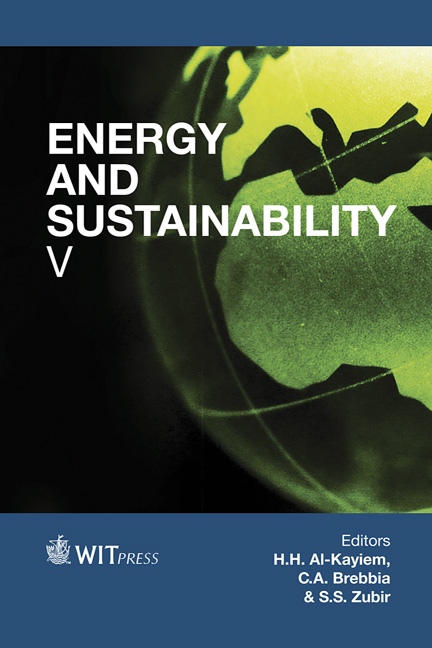Study Of Water Hyacinth (Eichhornia Crassipes) On The Quality Of Cow Dung Biogas
Price
Free (open access)
Transaction
Volume
186
Pages
8
Page Range
519 - 526
Published
2015
Size
303 kb
Paper DOI
10.2495/ESUS140451
Copyright
WIT Press
Author(s)
D. V. Adegunloye
Abstract
The objective of this research was to know the effect of water hyacinth (Eichhornia crassipes) on the quality of cow dung biogas. Water hyacinth (Eichhornia crassipes) is a perennial aquatic herb, which belongs to the family Pontedericeae. It is usually found floating freely on the surface of fresh water or can be anchored in mud. Using water hyacinth as a biogas is one of the ways to limit the disadvantageous effects of the plant and to provide a low-cost gas. Seventy five percent cow dung was mixed thoroughly with 25% blended water hyacinth (3:1) and cleaned water was added to form slurry, it was poured through the inlet orifice of a digester. Bacteria and mould counts of the materials were determined before and during digestion. Temperature, pH, of the digesting materials, biochemical and morphological characterization of the isolates were carried out to know the microorganisms responsible for the digestion of the materials. A total of eight (8) bacteria and four (4) fungi were isolated during digestion. The bacteria identified were Escherichia coli, Methanococcus mazei, Enterobacter aerogenes, Clostridium welchii, Methanobacterium ruminantium, Lactobacillus delbrueckii, Methanothrix sochngenii, Klebsiella pneumoniae and the fungi isolated included Aspergillus flavus, Aspergillus niger, Aspergillus fumigatus and Mucor mucedo. The pH of the digesting material was between 5.40 and 7.28. The temperature was from 30°C to 39°C. The result of the biogas analysis was 91.10% methane (CH4), other traced gases was 6.43%, while ammonia (NH3) was not detected. Twenty five percent (25%) water hyacinth added to the seventy five percent cow dung in ratio 3:1 showed that water hyacinth could be mixed with cow dung to improve the methane quality of the biogas. This could contribute to the reduction of environmental pollution.
Keywords
assessment, biogas, cow dung, environment, quality, methane, pH, temperature, water hyacinth





